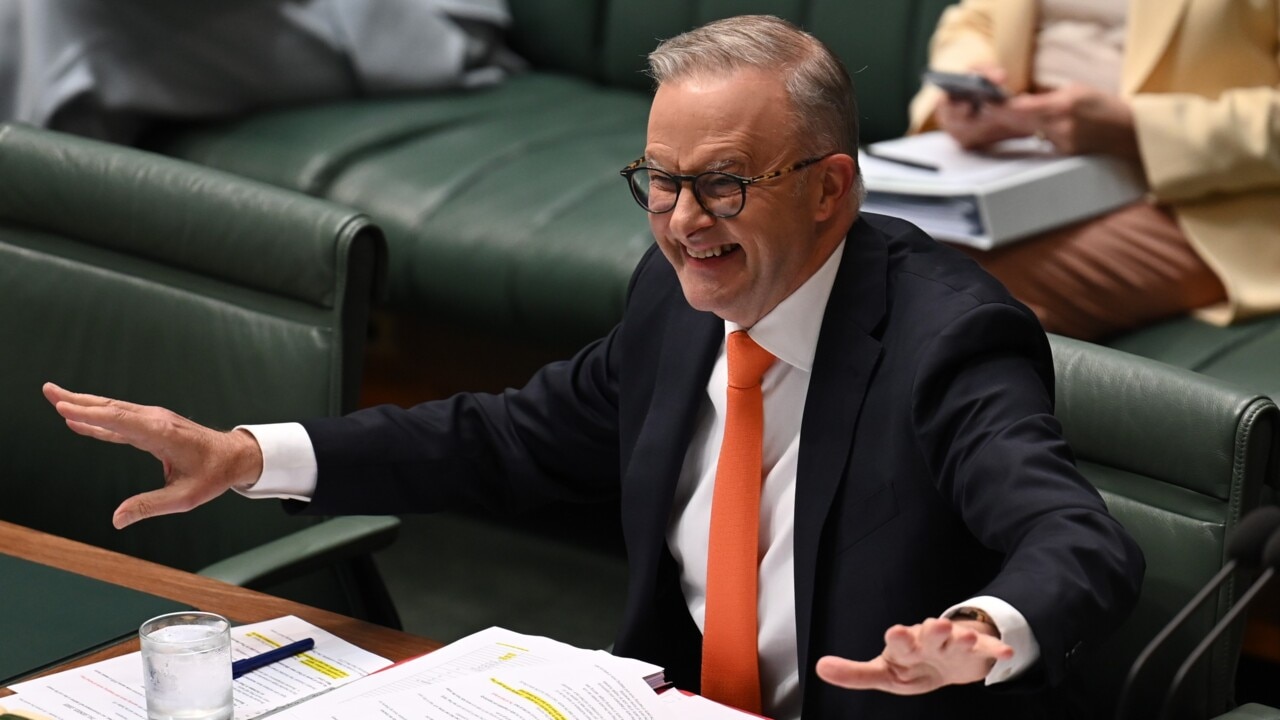Treasurer Jim Chalmers’ claim inflation “zigs and zags on the way down” as the government eyes 2.75 per cent inflation by the end of 2024 has been slammed by an economist who claims “there’s been no zags”.
On Sunday, Mr Chalmers told Sky News Australia’s Andrew Clennell Labor was “confident” but “not complacent” inflation could get down to 2.75 per cent by the end of the year, with it currently sitting at four per cent.
Mr Chalmers compared the Australian economy to those of the US and Canada, arguing Australia’s inflation “peaked later and lower” than those countries while backing calls from RBA officials who claim the experience of inflation’s slowdown is “pretty similar” to what’s happening around the world.
“Inflation has moderated in welcome and encouraging ways, but it doesn’t always moderate in a straight line – it zigs and zags on the way down and that’s what we’re seeing,” Mr Chalmers said.
The Treasurer’s claim did not hold up with the chief economic advisor at Judo Bank Warren Hogan, who argued inflation had either risen or stagnated since the start of the year.
The higher-than-expected jump of the Consumer Price Index (CPI) in the first quarter of the year, rising one per cent in the three months to March, should have warranted a rate rise, Mr Hogan argued.
“The market sort of looked at that (and) the RBA talked about a rate hike (and) didn’t do it, noting every time core inflation has increased by one per cent in the quarter since the inflation targeting started in the 1990s, they’ve responded with a rate hike, but they passed,” Mr Hogan told Sky News’ Ross Greenwood.
The economic expert then pointed to consecutive monthly CPI rises, with the biggest jump up to four per cent in May from 3.6 per cent in April.
“April’s monthly number (was) higher than expected … (then) May’s monthly number (was) higher than expected,” Mr Hogan said.
“We’ve actually had only zags, there’s been no zigs.”
The Judo Bank advisor argued other measures used to examine the “zigs and zags”, such as trimmed mean inflation data which had risen from 3.8 per cent to 4.4 per cent between January and May, were either stagnating or rising.
This, Mr Hogan argued, was proof inflation was not continuing its fall down to Mr Chalmers’ goal of 2.75 per cent and a rate hike could be on the horizon.
“We’ve pretty much got confirmation now that inflation is not continuing its fall towards target and that raises the question of what does the RBA do?” he said.
“That’s really important because they’ve been very tolerant of inflation. They have never raised rates as much as much as other central banks. They’ve allowed the economy to continue to grow and we’ve seen that with employment.”
While opinion on the chance of multiple hikes is split for the time being, analysis from Compare the Market revealed even a single rise would see households cop a hefty hit to their monthly budgets.
Homeowners with a mortgage of $750,000 would see average monthly repayments jump by $123 following a standard 0.25 per cent hike in August, while those with $600,000 in outstanding home loans copping a $98 monthly increase.

Meanwhile, Compare the Market also revealed average monthly repayments had jumped more than $1,000 for millions of Australians since the RBA first began hiking rates in May 2022.
Households with a $500,000 mortgage had seen an increase of $1,293 per average monthly repayment, while those with a $600,000 mortgage saw a $1,552 jump and those with $750,000 loans were hit with a $1,940 rise.
An interest rate hike looked more likely after figures from the Australian Bureau of Statistics (ABS) showed inflation jump to four per cent in the 12 months to May, up from 3.6 per cent in April.
The Assistant Governor of the Reserve Bank of Australia (RBA) Christopher Kent said an interest rate hike was not off the cards for cash strapped Aussies.
“Hence, with regards to the path of interest rates, the Reserve Bank Board is not ruling anything in or out,” he said.

